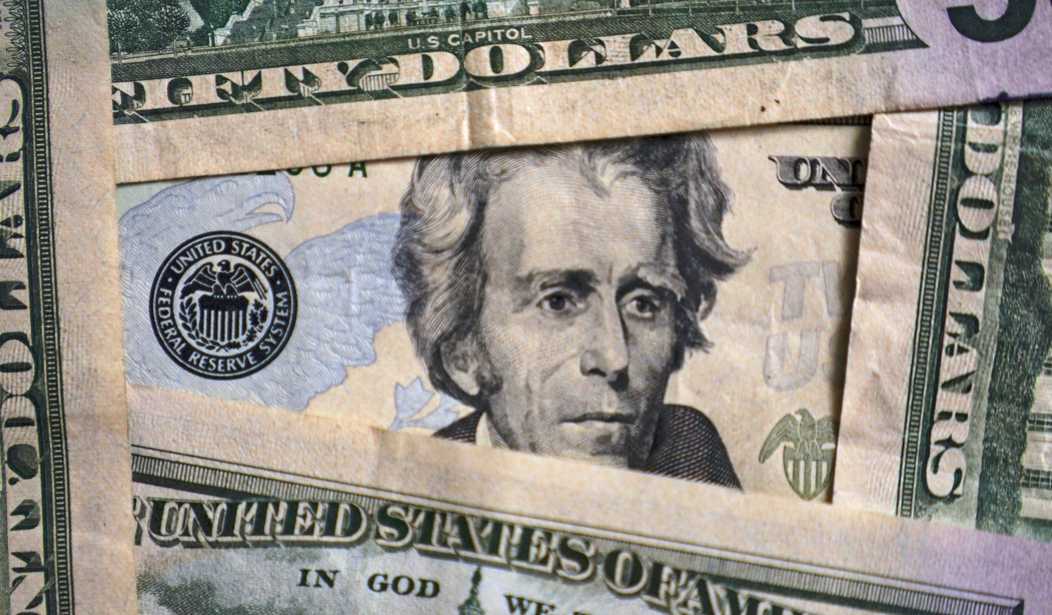When President Franklin D. Roosevelt presented his fiscal 1941 budget proposal on Jan. 3, 1940, he introduced it by explaining how his administration had worked to increase the size of government.
"The relatively low and constant level of expenditures throughout the nineteen-twenties accurately reflected the relatively minor role played by the Government in those years," Roosevelt said. "The substantial increase in the past decade is a reflection of the degree to which the country, in response to changing economic and international conditions and changing attitudes, has turned to the Government to meet social needs recognized by our citizenship.
"Nowhere are our democratic processes so faithfully depicted," he claimed.
"In the early thirties -- prior to 1933 -- fiscal policy was exceedingly simple in theory and extraordinarily disastrous in practice," he said. "It consisted in trying to keep expenditures as low as possible in the face of shrinking national income. Persistence in this attempt came near to bankrupting both our people and our Government."
"Following 1933," Roosevelt said, "the fiscal policy of the government was more realistically adapted to the needs of the people."
1933, of course, was the year Roosevelt took office.
So, what course did federal spending take when Roosevelt worked with a Democrat-controlled Congress during the Great Depression?
In fiscal 1932, which ended on June 30, 1932, Herbert Hoover was president. That year, federal spending equaled 6.8% of gross domestic product, according to the White House Office of Management and Budget.
In fiscal 1933, the year Roosevelt took office, it climbed to 7.9%. In the years from fiscal 1934 to fiscal 1940, it hit a high of 10.6% in 1934 and a low of 7.6% in 1938.
Recommended
In fiscal 1941, following Roosevelt's budget message celebrating big government, it rose to 11.7% of GDP.
On Jan. 3, 1941, 11 months before the Japanese bombed Pearl Harbor, Roosevelt sent Congress his budget proposal for fiscal 1942, which would begin on July 1, 1941.
"The Budget of the United States Government for the fiscal year ending June 30, 1942, which I transmit herewith, is a reflection of the world at war," Roosevelt said in that year's budget message.
"Carrying out the mandate of the people, the Government has embarked on a program for the total defense of our democracy," he said. "This means warships, freighters, tanks, planes, and guns to protect us against aggression; and jobs, health, and security to strengthen the bulwarks of democracy."
"Total defense means more than weapons," said Roosevelt. "It means an industrial capacity stepped up to produce all the materials for defense with the greatest possible speed."
"Sixty-two percent of the expenditures proposed in this budget are for national defense," he said.
So, how much did the federal government spend in that fiscal year -- when the Japanese attacked Pearl Harbor and the United States entered World War II?
Federal spending more than doubled, rising from 11.7% of GDP in fiscal 1941 to 23.8% in fiscal 1942.
In the three subsequent years of the war, it was 42.6%, 42.7% and 41%. Then, in the three years following the war, it dropped to 24.2%, 14.4% and then 11.4%.
Now, flash forward to fiscal 2022, President Joe Biden's first full fiscal year in office. That year, according to OMB, federal spending was 25.1% of GDP -- more than the 23.8% of fiscal 1942.
In fact, since World War II there have been only two years when federal spending equaled a larger share of GDP than it did last year. Those years were fiscal 2020 and 2021, when COVID-19 hit and federal spending climbed to 31.1% and 30.1% of GDP.
In the 20 fiscal years before the pandemic (2000-2019), federal spending averaged 20.36% of GDP.
So, will Biden and Congress now cut spending to put it more in line with pre-pandemic levels?
Actual federal spending in fiscal 2022, according to OMB, was $6.2733 trillion.
Last month, Biden signed the Fiscal Responsibility Act, which was approved by a Republican-controlled House. This act, according to an analysis published by the Congressional Budget Office, will modestly reduce its previously projected federal spending totals.
Without the FRA, according to CBO, the federal government would have spent $6.354 trillion this year. With the act, it will spend $6.350 trillion -- a cut of $4 billion.
Next year, CBO estimates that federal spending will be $6.348 trillion with the FRA instead of the $6.418 trillion it would have been without it -- a savings of $70 billion. However, even with this act, according to CBO, federal spending will still top $7 trillion in fiscal 2027, $8 trillion in fiscal 2030 and $9 trillion in fiscal 2032.
Over the next 11 years, CBO estimates, the cumulative federal deficit will be $18.791 trillion with the FRA -- as opposed to $20.314 trillion without it. "The smaller projected deficits also result in a decrease of $1.5 trillion in 2033 in CBO's projections of debt subject to the statutory limit," says the CBO analysis.
As of the end of last week, the federal debt was $32,592,962,824,463.71. So, where is it likely headed under current law?
"In CBO's May baseline projections, debt subject to that limit reaches $52.4 trillion in 2033. After subtracting the estimated effects of the FRA, that measure of debt is $50.9 trillion," said CBO.
The Bureau of Labor Statistics reported this month that there were 121,446,000 full-time wage and salary workers in the United States in the second quarter of this year, and that their median weekly earnings were $1,107.
The $50.9 trillion in debt the federal government is on track to accumulate by 2033 equals approximately $419,116 for each one of these full-time workers.
It is not a good deal. American workers deserve a federal government that is moving toward a balanced budget -- not ever-greater debt.
























Join the conversation as a VIP Member